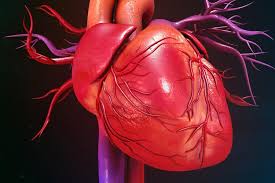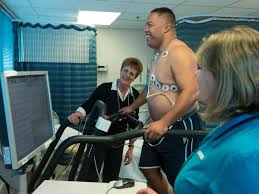Immediate Steps to Take When Heart Attack Symptoms Appear
A heart attack problem, medically known as myocardial infarction, occurs when blood flow to a part of the heart is blocked for a prolonged period, leading to damage or death of heart muscle tissue. Understanding the causes, symptoms, and preventive measures against heart attacks is crucial for maintaining cardiovascular health and preventing life-threatening complications. We will discuss the following topics:
Physiology of the heart attack problem
Heart disease
Risk factors for a heart attack
Causes of heart attacks
Pathophysiology of a heart attack
Signs and symptoms of a heart attack
Diagnosis of a heart disease
Prevention of heart attacks
Treatment of heart attack
Effect of foods on the heart
Heart healthy foods
Coffee and the heart
Chocolate and the heart
Pets and the heart
Strategies for a healthy heart
Herbal remedies
Effects of exercise on the heart
Effects of Smoking on the heart
Effects of Stress on the heart
Effects of pain on the heart
Life after a heart attack

The heart Attack Problem
The heart is a muscular organ located in the chest that pumps blood throughout the body. It is roughly the size of a fist and is positioned slightly to the left of the center of the chest. The heart is responsible for maintaining the circulation of blood, which is essential for delivering oxygen and nutrients to the body’s tissues and removing waste products.
The heart has four chambers: the right atrium, the left atrium, the right ventricle, and the left ventricle. Blood from the body enters the right atrium, where it is pumped into the right ventricle and then sent to the lungs to pick up oxygen. The oxygenated blood then returns to the left atrium, is pumped into the left ventricle, and then sent out to the rest of the body.
The heart is controlled by a complex system of electrical signals that regulate the heart rate and ensure that the four chambers contract in the correct sequence. The heart’s rhythm can be affected by a variety of factors, including physical activity, emotions, and certain medical conditions.
Physiology of the heart
The heart is a complex organ with a sophisticated physiology that enables it to function as the body’s main pump. Here are some of the key physiological processes involved in the functioning of the heart:
- Contraction and Relaxation: The heart’s main function is to pump blood, which it does by contracting and relaxing its four chambers. The contraction of the heart is called systole, while relaxation is called diastole. These processes are coordinated by electrical impulses that originate in the sinoatrial node (SA node) and travel through the heart’s conduction system.
- Blood flow: The heart receives blood from the body’s tissues through the superior and inferior vena cava, and from the lungs through the pulmonary veins. It pumps blood to the lungs to pick up oxygen through the pulmonary artery, and then pumps oxygen-rich blood to the rest of the body through the aorta.
- Heart rate: The heart rate is controlled by the autonomic nervous system, which consists of the sympathetic and parasympathetic branches. The sympathetic branch increases heart rate and contractility, while the parasympathetic branch slows heart rate and reduces contractility.
- Blood pressure: The heart works to maintain blood pressure, which is the force of blood against the walls of the blood vessels. Blood pressure is regulated by the autonomic nervous system and hormones such as renin-angiotensin-aldosterone.
- Oxygen and nutrient supply: The heart muscle requires oxygen and nutrients to function properly, which it receives through its own blood supply from the coronary arteries.
- Electrical conduction: The heart’s electrical conduction system coordinates the contraction and relaxation of its four chambers, which is necessary for efficient pumping. The SA node initiates electrical impulses that spread through the atria and then through the ventricles, causing them to contract in a coordinated manner.
Overall, the heart’s physiology is incredibly complex and requires precise coordination of multiple processes to function properly. Dysfunction in any of these processes can lead to various cardiovascular diseases.
Heart disease
Heart disease refers to a range of conditions that affect the heart’s structure and function. Some common types of heart disease include:
- Coronary artery disease: This is the most common type of heart disease and is caused by a buildup of plaque in the arteries that supply blood to the heart. This can lead to chest pain (angina), heart attacks, and other complications.
- Heart failure: Heart failure occurs when the heart is no longer able to pump blood effectively. This can be caused by a variety of factors, including coronary artery disease, high blood pressure, and diabetes.
- Arrhythmias: An arrhythmia is an abnormal heart rhythm that can be caused by a variety of factors, including heart disease, electrolyte imbalances, and medications.
- Valvular heart disease: This refers to conditions that affect the heart’s valves, which regulate blood flow through the heart. Examples include aortic stenosis and mitral regurgitation.
- Congenital heart defects: These are structural abnormalities of the heart that are present at birth. They can range from mild to severe and may require medical intervention.
Risk factors for heart disease include high blood pressure, high cholesterol, smoking, diabetes, family history, obesity, and a sedentary lifestyle. Treatment options for heart disease depend on the type and severity of the condition but may include lifestyle changes, medications, and surgery. Prevention strategies include maintaining a healthy diet, exercising regularly, avoiding smoking, and managing chronic medical conditions.
Heart attack

A heart attack is a life-threatening medical emergency that occurs when the blood supply to the heart is suddenly blocked. A heart attack can also be caused by a reduction of blood flow to the heart. The heart is a vital organ in our bodies, and its primary function is to pump oxygenated and nutrient-rich blood around the body, supplying muscles and other organs with what they need to stay healthy. It does this by contracting and relaxing rhythmically, pushing blood into arteries that deliver it all over the body. When someone suffers from a heart attack, this process of pumping is disrupted due to the lack of oxygenated blood reaching the cardiac muscles. Without intervention from medical professionals, this can cause long-term damage or even death.
Pathophysiology of a heart attack
A heart attack, also known as myocardial infarction, occurs when the blood flow to a part of the heart muscle is blocked, resulting in damage or death of the heart muscle cells. This is usually caused by the buildup of plaque, a fatty substance, on the inner walls of the coronary arteries, which supply oxygen-rich blood to the heart muscle.
When the plaque ruptures, it can cause the formation of a blood clot, which can completely block the flow of blood to the heart muscle. This blockage can lead to ischemia, a condition in which the heart muscle doesn’t receive enough oxygen and nutrients to function properly.
As the heart muscle cells are deprived of oxygen and nutrients, they begin to die, which can result in permanent damage to the heart muscle. The damage to the heart muscle can also cause the release of certain enzymes and proteins into the bloodstream, which can be detected through blood tests.
The severity of a heart attack depends on several factors, including the size and location of the blocked artery, the amount of time the artery has been blocked, and the overall health of the individual. In some cases, a heart attack can cause sudden death, while in other cases, it can lead to long-term complications such as heart failure, arrhythmias, and cardiogenic shock.
Prompt treatment is essential in reducing the damage caused by a heart attack. Treatment may include medications to dissolve the blood clot and restore blood flow to the heart, angioplasty or stenting to open up the blocked artery, or bypass surgery to reroute blood flow around the blocked artery. Rehabilitation and lifestyle changes, such as diet, exercise, and smoking cessation, may also be recommended to improve long-term outcomes.
Risk factors for a heart attack
There are several risk factors for a heart attack, including:
- Age: The risk of heart attack increases with age, especially for men over 45 and women over 55.
- Gender: Men are generally at higher risk of heart attack than women, although women’s risk increases after menopause.
- Family history: A family history of heart disease can increase the risk of heart attack.
- Smoking: Smoking or exposure to secondhand smoke can damage the blood vessels and increase the risk of heart attack.
- High blood pressure: High blood pressure can damage the blood vessels and increase the risk of heart attack.
- High cholesterol: High levels of cholesterol in the blood can lead to the buildup of plaque in the arteries, increasing the risk of heart attack.
- Diabetes: Diabetes can damage the blood vessels and increase the risk of heart attack.
- Obesity: Being overweight or obese can increase the risk of heart attack.
- Sedentary lifestyle: Lack of physical activity can increase the risk of heart attack.
- Stress: Chronic stress or a high-stress lifestyle can increase the risk of heart attack.
It’s important to note that many of these risk factors can be controlled through lifestyle changes and medical treatment. Managing these risk factors can help to reduce the risk of heart attack and other heart-related complications.
Causes of heart attacks
Several factors can contribute to the development of plaque buildup in the coronary arteries, including:
- High cholesterol levels: High levels of LDL (bad) cholesterol can contribute to the development of plaque in the arteries.
- High blood pressure: High blood pressure can damage the inner lining of the arteries, making them more susceptible to plaque buildup.
- Smoking: Smoking can damage the blood vessels and contribute to the development of plaque in the arteries.
- Diabetes: People with diabetes are at increased risk of heart attack due to damage to the blood vessels and an increased risk of plaque buildup.
- Obesity: Being overweight or obese can contribute to the development of high blood pressure, high cholesterol, and diabetes, all of which can increase the risk of heart attack.
- Lack of exercise: Lack of physical activity can contribute to the development of several risk factors for heart attack, including high blood pressure, high cholesterol, and obesity.
- Family history: A family history of heart disease can increase the risk of heart attack.
Other factors that can increase the risk of heart attack include stress, alcohol consumption, and age. It’s important to note that while some risk factors for heart attack cannot be changed, such as age and family history, many other risk factors can be controlled or managed through lifestyle changes and medical treatment.
Signs and symptoms of a heart attack

The most common signs and symptoms of a heart attack include:
- Chest pain or discomfort: This is the most common symptom of a heart attack. The pain may feel like pressure, fullness, squeezing, or aching in the center of the chest that lasts for more than a few minutes or comes and goes.
- Shortness of breath: This can occur with or without chest pain and may be accompanied by sweating, nausea, or lightheadedness.
- Pain or discomfort in other areas of the body: This can include the arms, back, neck, jaw, or stomach.
- Nausea or vomiting: This can occur in some cases and may be mistaken for indigestion.
- Sweating: This can be a sudden, cold sweat or a clammy feeling.
- Fatigue: This can occur before or during a heart attack and may be accompanied by a feeling of weakness.
- Discomfort to the arms, neck and jaw
It’s important to note that some people, especially women, may experience atypical symptoms of a heart attack, such as fatigue, shortness of breath, nausea, or back or jaw pain. These symptoms may be less severe or come and go, which can make them easy to dismiss or overlook.
If you experience any of these symptoms, Seek Medical Care Immediately
Diagnosis of a heart disease

Diagnosing a heart attack usually involves a combination of medical history, physical examination, and tests. Here are some of the common methods used to diagnose a heart attack:
- Electrocardiogram (ECG):
 This test records the electrical activity of the heart and can detect any abnormalities that indicate a heart attack. It is often the first test done in the emergency room.
This test records the electrical activity of the heart and can detect any abnormalities that indicate a heart attack. It is often the first test done in the emergency room. - Blood tests: Blood tests can measure certain enzymes released by the heart during a heart attack, such as troponin. These tests can help confirm the diagnosis and determine the severity of the heart attack.
- Chest X-ray: A chest X-ray can help rule out other conditions that may be causing chest pain or discomfort, such as a collapsed lung or pneumonia.
- Echocardiogram: This test uses sound waves to create images of the heart and can help assess the damage to the heart muscle caused by the heart attack.
- Coronary angiography: This test involves injecting a contrast dye into the coronary arteries and taking X-rays to look for blockages or narrowing of the arteries.
If a heart attack is diagnosed, immediate treatment is necessary to restore blood flow to the heart and prevent further damage. Treatment options may include medications, such as aspirin and nitroglycerin, or procedures, such as angioplasty and stenting, or coronary artery bypass surgery.
Prevention of heart attacks
Preventing a heart attack requires a multifaceted approach that involves both lifestyle changes and medical interventions. Here are some ways to reduce the risk of heart attack:
- Healthy diet: Eating a diet that is rich in fruits, vegetables, whole grains, lean protein, and healthy fats can help to lower the risk of heart attack. Limiting intake of processed foods, saturated and trans fats, salt, and added sugars is also important.
- Regular exercise: Engaging in regular physical activity, such as brisk walking, jogging, swimming, or cycling, can help to lower blood pressure, reduce cholesterol levels, and maintain a healthy weight.
- Manage stress: Stress can increase the risk of heart attack, so it’s important to manage stress through techniques such as meditation, deep breathing, yoga, or talking to a counselor.
- Quit smoking: Smoking can damage the blood vessels and increase the risk of plaque buildup, so quitting smoking is one of the most important steps in preventing heart attacks.
- Manage medical conditions: Conditions such as high blood pressure, high cholesterol, diabetes, and obesity can increase the risk of heart attack, so it’s important to manage these conditions through lifestyle changes and medication as prescribed by a healthcare provider.
- Take medication as prescribed: Medications such as aspirin, statins, and blood pressure medications can help to reduce the risk of heart attack when taken as prescribed.
- Regular check-ups: Regular visits to a healthcare provider can help to identify and manage any potential risk factors for heart attack.
By making these lifestyle changes and working with a healthcare provider to manage any medical conditions, it’s possible to significantly reduce the risk of heart attack and improve overall cardiovascular health.
Management of a heart attack
When it comes to heart attack care, time is of the essence. Immediate treatment from a medical professional is essential to ensure the best possible outcome. A heart attack occurs when the blood supply to part of the heart muscle is blocked, usually by a blood clot. Treatment for a heart attack typically involves medications such as aspirin, thrombolytics, beta blockers, and ACE inhibitors. In some cases, surgery may be necessary to open the blocked artery. It is important to follow the advice of your healthcare provider to ensure optimal recovery from a heart attack.
Treatment of a heart attack

Treatment for a heart attack typically involves a combination of medical interventions to restore blood flow to the heart and prevent further damage to the heart muscle. The treatment of a heart attack is focused on restoring blood flow to the heart as quickly as possible to minimize the damage to the heart muscle. Here are some common treatments for a heart attack:
Medications: Medications are usually given as soon as possible to help dissolve blood clots and prevent further blockages in the arteries. Common medications used include aspirin, nitroglycerin, and thrombolytics.
Angioplasty and stenting: Angioplasty involves the insertion of a small balloon into the blocked artery to widen it and improve blood flow. A stent, a small mesh tube, is then inserted to help keep the artery open. This is often done immediately after a heart attack to restore blood flow to the heart.
Coronary artery bypass grafting (CABG): In cases where the blockage is severe or widespread, CABG surgery may be necessary. This involves the rerouting of blood flow around the blocked artery using a healthy blood vessel from another part of the body. It is usually done if angioplasty and stenting are not possible.
Cardiac rehabilitation: Rehabilitation, which includes exercise, dietary counseling, and lifestyle modifications, is an important part of recovery after a heart attack and prevent future heart problems.
Lifestyle changes: Making lifestyle changes, such as quitting smoking, following a healthy diet, engaging in regular exercise, and managing stress, can help to reduce the risk of future heart attacks.
In addition to these treatments, lifestyle changes such as quitting smoking, maintaining a healthy weight, exercising regularly, and eating a heart-healthy diet are important for managing heart health after a heart attack. It is important to work closely with a healthcare provider to develop an individualized treatment plan.
Effect of foods on the heart

- Garlic and onions: known for their cardiovascular benefits, including reducing blood pressure and cholesterol levels. They contain sulfur compounds that can help to improve circulation and reduce inflammation. Garlic and onions can be prepared in a variety of ways, such as roasted, sautéed, or raw in salads or dips.
- Grape juice contains antioxidants called polyphenols, which can help to improve circulation, reduce inflammation, and protect against heart disease. It’s important to choose a grape juice that is 100% juice with no added sugar. Grape juice can be consumed on its own or mixed with sparkling water for a refreshing drink.
- Nuts and seeds: good source of healthy fats, fiber, and protein, and have been shown to have cardiovascular benefits, including reducing cholesterol levels and improving blood pressure. Some examples of heart-healthy nuts and seeds include almonds, walnuts, chia seeds, and flaxseeds. Nuts and seeds can be eaten on their own as a snack or added to salads, yogurt, or oatmeal.
- Fruits and vegetables: great source of vitamins, minerals, fiber, and antioxidants, which can help to reduce inflammation, improve circulation, and protect against heart disease. Some examples of heart-healthy fruits and vegetables include berries, leafy greens, citrus fruits, and cruciferous vegetables such as broccoli and cauliflower. Fruits and vegetables can be eaten raw, cooked, or blended into smoothies or juices.
- Flax: a rich source of omega-3 fatty acids, fiber, and lignans, which have been shown to have cardiovascular benefits, including reducing inflammation and improving cholesterol levels. Flax can be added to smoothies, yogurt, oatmeal, or used as an egg substitute in baking recipes.
- Beans: good source of protein, fiber, and vitamins, and have been shown to have cardiovascular benefits, including reducing cholesterol levels and improving blood sugar control. Some examples of heart-healthy beans include black beans, chickpeas, and lentils. Beans can be added to salads, soups, or used as a base for vegetarian burgers.
- Milk and cheese: good source of calcium and vitamin D, which are important for heart health. However, some types of cheese, such as cheddar and gouda, can be high in saturated fat and sodium, which can increase the risk of heart disease. It’s important to choose low-fat or skim milk and cheese, and to limit high-fat cheeses.
- Eggs: good source of protein, vitamins, and minerals, but they have been associated with an increased risk of heart disease in some studies. It’s important to eat eggs in moderation and to choose healthier cooking methods, such as boiling or poaching, instead of frying.
- Vitamin B: including folate, B6, and B12, have been shown to have cardiovascular benefits, including reducing inflammation and improving circulation. Vitamin B can be found in a variety of foods, including leafy greens, whole grains, meat, fish, and fortified cereals. It’s important to talk to your healthcare provider before taking vitamin supplements.
When choosing heart-healthy foods, it’s important to eat a variety of nutrient-dense foods and to limit foods that are high in saturated fat, sodium, and added sugars. Preparing foods at home can also help to control the amount of salt, sugar, and fat in your diet.
Garlic and onions are two commonly used herbs that have been studied for their potential benefits on heart health. Both garlic and onions contain sulfur compounds that have been shown to have positive effects on cardiovascular health.

Effects on the Heart: Garlic and onions have been shown to have various effects on the heart, including:
- Reducing blood pressure
- Lowering cholesterol levels
- Decreasing inflammation
- Preventing blood clots
- Improving blood vessel function
Benefits: Some potential benefits of consuming garlic and onions for heart health include:
- Lower risk of heart disease
- Lower risk of stroke
- Reduced risk of hypertension
- Improved lipid profiles
Risks: Garlic and onions are generally considered safe when consumed in normal food quantities. However, some individuals may experience adverse effects such as heartburn, gas, and bloating. Additionally, those who are taking blood-thinning medications or have bleeding disorders should exercise caution when consuming garlic and onions, as they may increase the risk of bleeding.
How to Prepare and Use: Garlic and onions can be easily incorporated into meals to add flavor and potential health benefits. Some tips for preparation include:
- For garlic, chop or crush it before cooking to release its beneficial compounds
- For onions, slice or dice them and cook them lightly to maintain their nutrient content
- Use garlic and onions in soups, stews, stir-fries, and other dishes for added flavor and potential health benefits
Overall, garlic and onions are flavorful and healthy additions to a heart-healthy diet.
Heart healthy foods
Eating a healthy, balanced diet is an important part of maintaining heart health. Here are some heart-healthy foods that you can incorporate into your diet:
- Fruits and vegetables: These are rich in vitamins, minerals, and fiber, and can help to reduce the risk of heart disease. Aim for at least five servings of fruits and vegetables per day.
- Whole grains: Whole grains such as oatmeal, brown rice, and whole wheat bread are rich in fiber and can help to lower cholesterol levels and reduce the risk of heart disease.
- Fish: Fish such as salmon, mackerel, and tuna are rich in omega-3 fatty acids, which can help to reduce inflammation and lower the risk of heart disease.
- Nuts and seeds: Nuts and seeds such as almonds, walnuts, and flaxseeds are rich in healthy fats, fiber, and antioxidants, and can help to lower cholesterol levels and reduce the risk of heart disease.
- Legumes: Legumes such as beans, lentils, and chickpeas are rich in fiber and can help to lower cholesterol levels and reduce the risk of heart disease.
- Lean protein: Choose lean protein sources such as chicken, turkey, and fish over red meat, which is high in saturated fat and can increase the risk of heart disease.
- Low-fat dairy: Choose low-fat dairy products such as skim milk, low-fat cheese, and yogurt, which are lower in saturated fat and can help to maintain heart health.
- Olive oil: Olive oil is a healthy source of monounsaturated fats, which can help to lower cholesterol levels and reduce the risk of heart disease.
Remember to also limit your intake of saturated and trans fats, sodium, and added sugars, which can increase the risk of heart disease. A healthy, balanced diet combined with regular exercise and other healthy lifestyle choices can help to maintain heart health and reduce the risk of heart disease.
Coffee and the heart

Coffee is one of the most commonly consumed beverages in the world, and it has been the subject of numerous studies examining its effects on heart health. Here’s an overview of what we know about coffee and the heart:
Benefits: Studies have suggested that moderate coffee consumption (defined as 3-5 cups per day) may be associated with a reduced risk of heart disease, stroke, and other cardiovascular events. The benefits are thought to be due to the antioxidant and anti-inflammatory properties of coffee.
Risks: Excessive coffee consumption (more than 5 cups per day) has been associated with an increased risk of heart disease and high blood pressure. However, it’s important to note that the evidence for this is mixed, and other factors such as lifestyle and genetics may also play a role.
Caffeine: Caffeine is a stimulant found in coffee that can increase heart rate and blood pressure, but the effects are usually temporary and mild.
Preparation: The way coffee is prepared can also affect its effects on the heart. For example, unfiltered coffee (such as French press or espresso) can increase cholesterol levels, which may increase the risk of heart disease. Adding sugar, cream, or other flavorings to coffee can also add calories and potentially increase the risk of heart disease.
Overall, moderate coffee consumption is unlikely to have a significant impact on heart health for most people. However, individuals who are sensitive to caffeine or have certain health conditions should speak with their healthcare provider about their caffeine and coffee intake.
Chocolate and the heart
Chocolate is a popular treat enjoyed by many people around the world, and it has been the subject of numerous studies examining its effects on heart health. Here’s an overview of what we know about chocolate and the heart:
Benefits: Studies have suggested that chocolate, particularly dark chocolate that is high in cocoa content, may have heart-healthy benefits. The flavonoids in cocoa have antioxidant and anti-inflammatory properties, which may help to improve blood flow, lower blood pressure, and reduce the risk of heart disease. Some studies have also suggested that chocolate consumption may be associated with improved cholesterol levels and a reduced risk of stroke.
Risks: While chocolate itself is not a risk factor for heart disease, many commercially available chocolate products contain high amounts of sugar, which can contribute to weight gain, high blood pressure, and other risk factors for heart disease. It’s important to choose high-quality chocolate that is low in added sugar and other unhealthy additives.
Caffeine: Chocolate also contains caffeine, which can increase heart rate and blood pressure, but the effects are usually temporary and mild. Most people can safely consume moderate amounts of chocolate without adverse effects.
Portion control: One important consideration when consuming chocolate for heart health benefits is portion control. While dark chocolate may have health benefits, it is also high in calories and fat, so it’s important to consume it in moderation as part of a balanced diet.
Overall, high-quality dark chocolate that is low in added sugar and consumed in moderation can be part of a heart-healthy diet. However, individuals with certain health conditions or who are sensitive to caffeine should speak with their healthcare provider about their chocolate and caffeine intake.
Pets and the heart
Pets can have a positive impact on heart health in several ways. Here are some ways that pets can benefit heart health:
- Lower stress levels: Studies have shown that interacting with pets, particularly dogs, can lower stress levels and reduce the risk of heart disease. Petting a dog or cat can release hormones that promote feelings of calmness and relaxation.
- Increase physical activity: Owning a pet, particularly a dog, can increase physical activity levels. Walking a dog or playing with a pet can provide a fun and enjoyable way to get exercise, which can help to improve cardiovascular health.
- Reduce loneliness and depression: Pets can provide companionship and social support, which can help to reduce feelings of loneliness and depression. Social isolation and depression are risk factors for heart disease, so the companionship of a pet can have a positive impact on heart health.
- Lower blood pressure: Studies have shown that pet ownership, particularly dog ownership, can lower blood pressure levels. The reasons for this are not fully understood, but may be related to the stress-lowering effects of pet ownership.
It’s important to note that while pets can have a positive impact on heart health, pet ownership is not a substitute for other heart-healthy behaviors, such as regular exercise, a healthy diet, and managing stress. If you’re considering getting a pet, be sure to talk to your healthcare provider to ensure that it’s a safe and appropriate choice for you.
Strategies for a healthy heart
Maintaining a healthy heart is important for overall health and wellbeing. Here are some strategies that can help promote a healthy heart:
- Regular exercise: Physical activity is essential for heart health. The American Heart Association recommends at least 150 minutes of moderate-intensity aerobic activity or 75 minutes of vigorous-intensity aerobic activity per week.
- Healthy diet: Eating a diet that is rich in fruits, vegetables, whole grains, lean protein, and healthy fats can help to reduce the risk of heart disease. Limiting intake of saturated and trans fats, sodium, and added sugars is also important.
- Maintaining a healthy weight: Being overweight or obese can increase the risk of heart disease. Maintaining a healthy weight through a combination of healthy eating and regular physical activity can help to reduce this risk.
- Managing stress: Chronic stress can have negative effects on heart health. Finding healthy ways to manage stress, such as meditation, yoga, or spending time with friends and family, can help to reduce this risk.
- Avoiding smoking and excessive alcohol consumption: Smoking and excessive alcohol consumption can increase the risk of heart disease. Quitting smoking and limiting alcohol consumption can help to reduce this risk.
- Getting regular check-ups: Regular check-ups with a healthcare provider can help to identify and manage risk factors for heart disease, such as high blood pressure and high cholesterol.
- Getting enough sleep: Getting enough sleep is important for heart health. Aim for 7-8 hours of sleep per night.
By adopting these strategies, you can help to promote a healthy heart and reduce the risk of heart disease.
Herbal remedies

Herbal remedies have been used for centuries to help support heart health and manage various heart conditions. It’s important to note that herbal remedies should not be used as a substitute for medical treatment, and it’s important to talk to your healthcare provider before starting any herbal remedies. It’s important to note that herbal remedies can interact with other medications, and some herbal remedies may not be safe for people with certain medical conditions. Always talk to your healthcare provider before starting any herbal remedies. Here are some herbal remedies that have been used for various heart conditions:
- Ginkgo biloba:
 Ginkgo biloba is an herbal remedy that has been used for centuries to treat a variety of ailments, including heart conditions. It can improve blood flow to the heart, reduce inflammation, symptoms such as chest pain and shortness of breath. It also helps to manage symptoms of heart failure and angina. However, ginkgo biloba can interact with certain medications, including blood thinners, and may not be safe for people with certain medical conditions, such as epilepsy. It’s important to talk to your healthcare provider before using ginkgo biloba. You can take ginkgo biloba as a supplement, usually in the form of a capsule or tablet.
Ginkgo biloba is an herbal remedy that has been used for centuries to treat a variety of ailments, including heart conditions. It can improve blood flow to the heart, reduce inflammation, symptoms such as chest pain and shortness of breath. It also helps to manage symptoms of heart failure and angina. However, ginkgo biloba can interact with certain medications, including blood thinners, and may not be safe for people with certain medical conditions, such as epilepsy. It’s important to talk to your healthcare provider before using ginkgo biloba. You can take ginkgo biloba as a supplement, usually in the form of a capsule or tablet. - Hawthorn:
 Hawthorn is an herbal remedy that has been shown to have benefits for heart health. It can help to improve blood flow to the heart, reduce inflammation, symptoms such as chest pain and shortness of breath and manage symptoms of heart failure and angina. Hawthorn is generally considered safe when used as directed, but it can interact with certain medications, including blood pressure medications. It’s important to talk to your healthcare provider before using hawthorn. You can take hawthorn as a supplement, usually in the form of a capsule or tablet.
Hawthorn is an herbal remedy that has been shown to have benefits for heart health. It can help to improve blood flow to the heart, reduce inflammation, symptoms such as chest pain and shortness of breath and manage symptoms of heart failure and angina. Hawthorn is generally considered safe when used as directed, but it can interact with certain medications, including blood pressure medications. It’s important to talk to your healthcare provider before using hawthorn. You can take hawthorn as a supplement, usually in the form of a capsule or tablet. - Ginger:
 Ginger is an herbal remedy that has anti-inflammatory and antioxidant properties, and has been shown to have benefits for heart health. It can help to reduce inflammation, improve cholesterol levels, and manage symptoms of heart disease. Ginger is generally considered safe when used as a spice in cooking or as a supplement, but it can interact with certain medications, including blood thinners. It’s important to talk to your healthcare provider before using ginger.
Ginger is an herbal remedy that has anti-inflammatory and antioxidant properties, and has been shown to have benefits for heart health. It can help to reduce inflammation, improve cholesterol levels, and manage symptoms of heart disease. Ginger is generally considered safe when used as a spice in cooking or as a supplement, but it can interact with certain medications, including blood thinners. It’s important to talk to your healthcare provider before using ginger. - Turmeric:
 Turmeric is an herbal remedy that has anti-inflammatory properties and has been shown to have benefits for heart health. It can help to reduce inflammation in the body, improve cholesterol levels, and manage symptoms of heart disease. Turmeric is generally considered safe when used as a spice in cooking or as a supplement, but it can interact with certain medications, including blood thinners. It’s important to talk to your healthcare provider before using turmeric.
Turmeric is an herbal remedy that has anti-inflammatory properties and has been shown to have benefits for heart health. It can help to reduce inflammation in the body, improve cholesterol levels, and manage symptoms of heart disease. Turmeric is generally considered safe when used as a spice in cooking or as a supplement, but it can interact with certain medications, including blood thinners. It’s important to talk to your healthcare provider before using turmeric. - Horse chestnut:
 Horse chestnut is an herbal remedy that has been used to treat a variety of conditions, including heart conditions. It can improve blood flow to the heart and reduce inflammation, but it can also cause side effects such as nausea, vomiting, and headache. Horse chestnut may interact with certain medications, including blood thinners, and may not be safe for people with certain medical conditions, such as liver disease. It’s important to talk to your healthcare provider before using horse chestnut. You can take horse chestnut as a supplement, usually in the form of a capsule or tablet.
Horse chestnut is an herbal remedy that has been used to treat a variety of conditions, including heart conditions. It can improve blood flow to the heart and reduce inflammation, but it can also cause side effects such as nausea, vomiting, and headache. Horse chestnut may interact with certain medications, including blood thinners, and may not be safe for people with certain medical conditions, such as liver disease. It’s important to talk to your healthcare provider before using horse chestnut. You can take horse chestnut as a supplement, usually in the form of a capsule or tablet.
When using herbal remedies, it’s important to follow the recommended dosages and talk to your healthcare provider before using them, especially if you have a medical condition or are taking medications. You can prepare some of these herbs as teas, but it’s important to use caution and follow the recommended dosages.
Effects of exercise on the heart

Exercise: Regular exercise has numerous benefits for heart health, including:
- Improving heart and lung function
- Lowering blood pressure
- Reducing cholesterol levels
- Promoting healthy weight management
- Reducing inflammation
- Improving insulin sensitivity
Overall, exercise is an important component of maintaining a healthy heart and reducing the risk of heart disease.
Effects of smoking on the heart

Smoking is a significant risk factor for heart disease and other cardiovascular conditions. Smoking damages blood vessels, increases blood pressure, and raises cholesterol levels. It also increases the risk of blood clots and can lead to the development of atherosclerosis. Quitting smoking is one of the most important steps an individual can take to reduce their risk of heart disease.
Effects of stress on the heart
Stress can have negative effects on heart health, as it can increase blood pressure and heart rate, as well as promote inflammation and damage to blood vessels. Chronic stress can also increase the risk of developing cardiovascular disease. Stress management techniques, such as exercise, meditation, and therapy, can be helpful in reducing the negative effects of stress on heart health.
Effects of pain on the heart
Pain can have a negative impact on heart health, particularly if it is chronic. Chronic pain has been linked to an increased risk of heart disease and stroke. Pain management techniques, such as medication, physical therapy, and mindfulness practices, can be helpful in reducing the negative effects of pain on heart health.
Life after a heart attack
Life after a heart attack can be a challenging and overwhelming experience. However, with proper medical care, lifestyle changes, and support from loved ones, it is possible to lead a fulfilling and healthy life after a heart attack. Here are some important steps to take after a heart attack:
- Follow your doctor’s instructions: Your doctor will likely provide specific instructions for medication, exercise, diet, and other lifestyle changes to promote heart health. It is important to follow these instructions closely and attend all follow-up appointments.
- Make lifestyle changes: Lifestyle changes, such as quitting smoking, maintaining a healthy weight, eating a heart-healthy diet, and exercising regularly, can help reduce the risk of future heart attacks and promote overall heart health.
- Manage stress: Stress can have negative effects on heart health, so it is important to find healthy ways to manage stress, such as through exercise, meditation, and therapy.
- Seek support: Having a strong support system can help you cope with the emotional and physical challenges of life after a heart attack. This may include family, friends, support groups, or counseling.
- Stay informed: Keep up to date with the latest information and research on heart health and ask your doctor any questions or concerns you may have.
- Have an emergency plan: It is important to have a plan in place in case of future heart-related emergencies, such as knowing the signs and symptoms of a heart attack and how to respond.
Remember, recovery from a heart attack is a process that takes time and patience. With the right care and lifestyle changes, it is possible to regain your health and enjoy a full and satisfying life.
Disclaimer: The information provided in this content is for general informational purposes only. It is not intended as medical or healthcare advice, diagnosis, or treatment. Always seek the advice of a qualified healthcare professional with any questions you may have regarding a medical condition or healthcare decisions.


 This test records the electrical activity of the heart and can detect any abnormalities that indicate a heart attack. It is often the first test done in the emergency room.
This test records the electrical activity of the heart and can detect any abnormalities that indicate a heart attack. It is often the first test done in the emergency room. Ginkgo biloba is an herbal remedy that has been used for centuries to treat a variety of ailments, including heart conditions. It can improve blood flow to the heart, reduce inflammation, symptoms such as chest pain and shortness of breath. It also helps to manage symptoms of heart failure and angina. However, ginkgo biloba can interact with certain medications, including blood thinners, and may not be safe for people with certain medical conditions, such as epilepsy. It’s important to talk to your healthcare provider before using ginkgo biloba. You can take ginkgo biloba as a supplement, usually in the form of a capsule or tablet.
Ginkgo biloba is an herbal remedy that has been used for centuries to treat a variety of ailments, including heart conditions. It can improve blood flow to the heart, reduce inflammation, symptoms such as chest pain and shortness of breath. It also helps to manage symptoms of heart failure and angina. However, ginkgo biloba can interact with certain medications, including blood thinners, and may not be safe for people with certain medical conditions, such as epilepsy. It’s important to talk to your healthcare provider before using ginkgo biloba. You can take ginkgo biloba as a supplement, usually in the form of a capsule or tablet. Hawthorn is an herbal remedy that has been shown to have benefits for heart health. It can help to improve blood flow to the heart, reduce inflammation, symptoms such as chest pain and shortness of breath and manage symptoms of heart failure and angina. Hawthorn is generally considered safe when used as directed, but it can interact with certain medications, including blood pressure medications. It’s important to talk to your healthcare provider before using hawthorn. You can take hawthorn as a supplement, usually in the form of a capsule or tablet.
Hawthorn is an herbal remedy that has been shown to have benefits for heart health. It can help to improve blood flow to the heart, reduce inflammation, symptoms such as chest pain and shortness of breath and manage symptoms of heart failure and angina. Hawthorn is generally considered safe when used as directed, but it can interact with certain medications, including blood pressure medications. It’s important to talk to your healthcare provider before using hawthorn. You can take hawthorn as a supplement, usually in the form of a capsule or tablet. Ginger is an herbal remedy that has anti-inflammatory and antioxidant properties, and has been shown to have benefits for heart health. It can help to reduce inflammation, improve cholesterol levels, and manage symptoms of heart disease. Ginger is generally considered safe when used as a spice in cooking or as a supplement, but it can interact with certain medications, including blood thinners. It’s important to talk to your healthcare provider before using ginger.
Ginger is an herbal remedy that has anti-inflammatory and antioxidant properties, and has been shown to have benefits for heart health. It can help to reduce inflammation, improve cholesterol levels, and manage symptoms of heart disease. Ginger is generally considered safe when used as a spice in cooking or as a supplement, but it can interact with certain medications, including blood thinners. It’s important to talk to your healthcare provider before using ginger. Turmeric is an herbal remedy that has anti-inflammatory properties and has been shown to have benefits for heart health. It can help to reduce inflammation in the body, improve cholesterol levels, and manage symptoms of heart disease. Turmeric is generally considered safe when used as a spice in cooking or as a supplement, but it can interact with certain medications, including blood thinners. It’s important to talk to your healthcare provider before using turmeric.
Turmeric is an herbal remedy that has anti-inflammatory properties and has been shown to have benefits for heart health. It can help to reduce inflammation in the body, improve cholesterol levels, and manage symptoms of heart disease. Turmeric is generally considered safe when used as a spice in cooking or as a supplement, but it can interact with certain medications, including blood thinners. It’s important to talk to your healthcare provider before using turmeric. Horse chestnut is an herbal remedy that has been used to treat a variety of conditions, including heart conditions. It can improve blood flow to the heart and reduce inflammation, but it can also cause side effects such as nausea,
Horse chestnut is an herbal remedy that has been used to treat a variety of conditions, including heart conditions. It can improve blood flow to the heart and reduce inflammation, but it can also cause side effects such as nausea,